Donkeys vs. Elephants (2 players)
Short Summary
This game acts as a criticism towards modern politics; how chaotic and manipulative it can be. Players interact as a fissure between the left and right wing, trying hard to score votes and public approval. Both sides try and control the crowd in the middle of the board in order to give themselves a tactical advantage. It comes to show how politics can manipulate crowds, or the decisions of the public in order to thrive. Furthermore, there is always going to be a debate between the parties, without a settlement or peace negotiation to end the ongoing bickering.
Design Process & Thought Process
Iterative Design
First and foremost, the two main colors I used for the game’s board design is red and blue. Of course, this reflects upon the democratic and republican parties. At first, the board was completely plain, but I wanted to figure out a way that I can better differentiate both sides. Below you can observe the before and after board design I touched upon. I like simplistic designs for my games. I wanted to find a balance between color and simplicity, going back to what I was saying on differentiating both sides.


Next, another design consideration I had to take was where the marble was going to be placed. This had to be some kind of launching area for the players to determine angles before firing. I didn’t want to make the launch area too small, restricting movement. Additionally, I didn’t want to make the launch zone too big, or else it would be too easy to launch across the board. In order for the marble to sit comfortably without rolling around, I poked a multitude of holes in the launch zone so players wouldn’t have to worry about keeping the marble perfectly steady.

Lastly, the sticks used to hit the ball are identified by a color, in which both sides can use their respected stick.
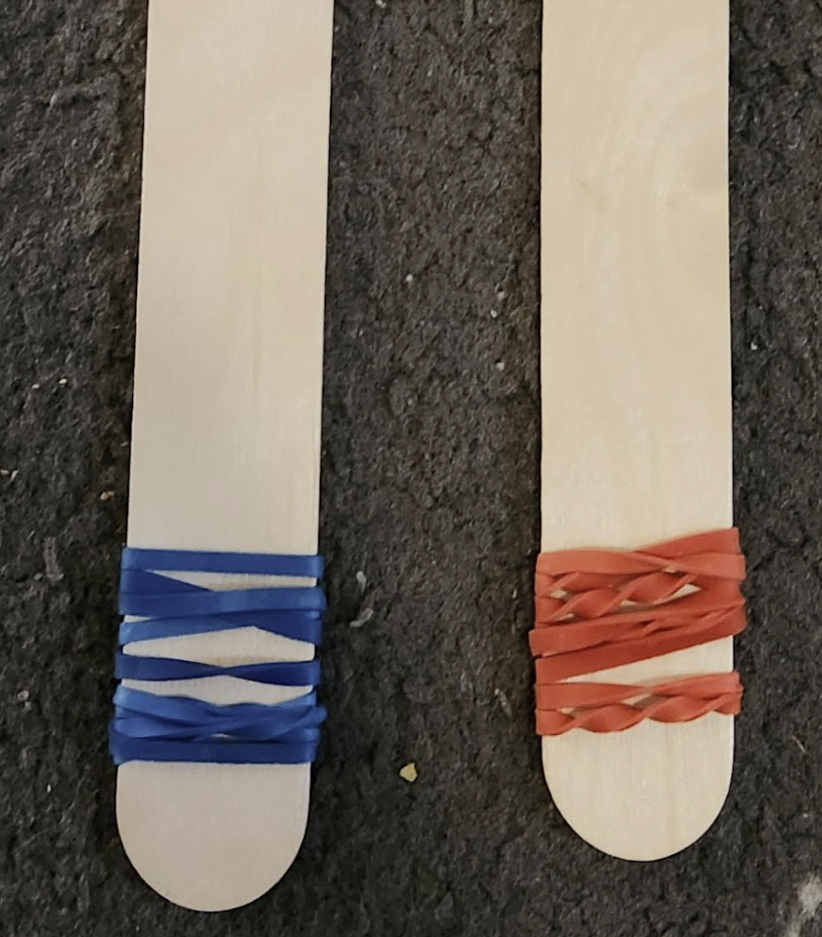
Game Mechanics
The first main mechanic in the game are the three goals of your opponent. These goals replaced the ballot boxes that I first initially used during the early prototype. The ballot boxes were originally point indicators, as the first player to knock over all three ballot boxes one the game. The problem with that was, it was easy to knock over all three ballot boxes at once. This made the game too easy to end quickly, not letting the other player have a chance. So instead, I added three holes that act as the goals.

This way, players are instructed to get all three of their balls into the goals. This mechanic allows for a slower-paced gameplay which is more forgiving.
The second essential mechanic of the game are the hitting sticks. I’ve talked about them already in the iterative design, but they serve as good launch options for the marbles. Originally, I thought about making the launch mechanic as a rubber band, but I soon came to find how it would be confusing to implement that into my board design. There would not be enough room to fit a rubber band onto the board, so instead I made the game more like knock hockey.
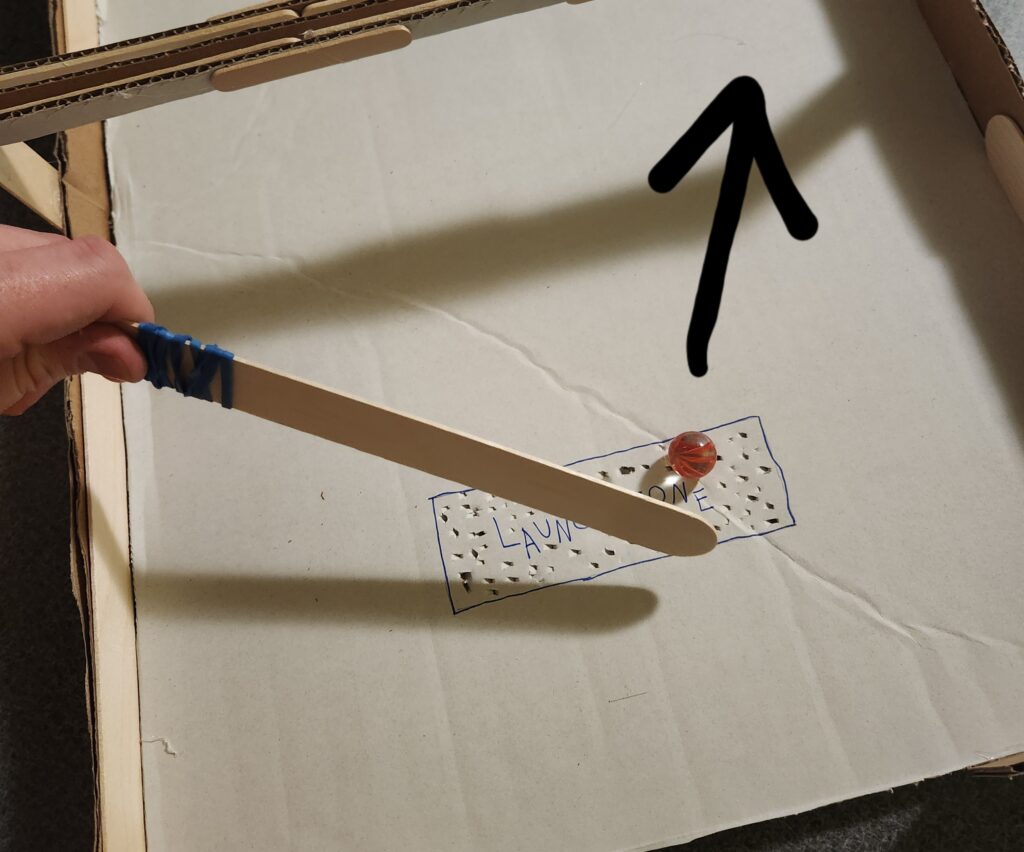
Player Goals
The task of this game is to get all three of your marbles into the opponents’ goals. There are three goals for three marbles, and players can inhibit progression by moving the pegs around in order to block an open goal. Each turn a player takes is a hit of their marble, followed by a spin of the wheel. The wheel will determine how many pegs the player can move to block the incoming marbles. When a goal is occupied by a marble, it can’t be altered, and that is considered to be a point. The game ends by the first person to score all three goals occupied by a separate marble.
Gameplay Sequence
Here are some of the gameplay sequences I have captured.
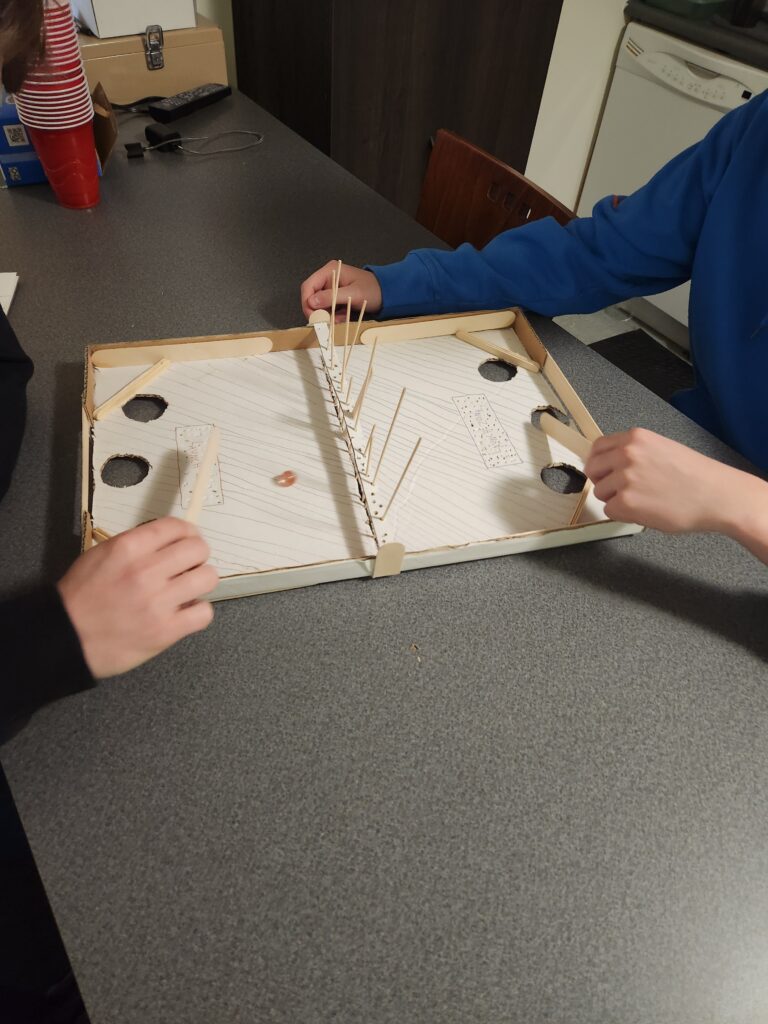
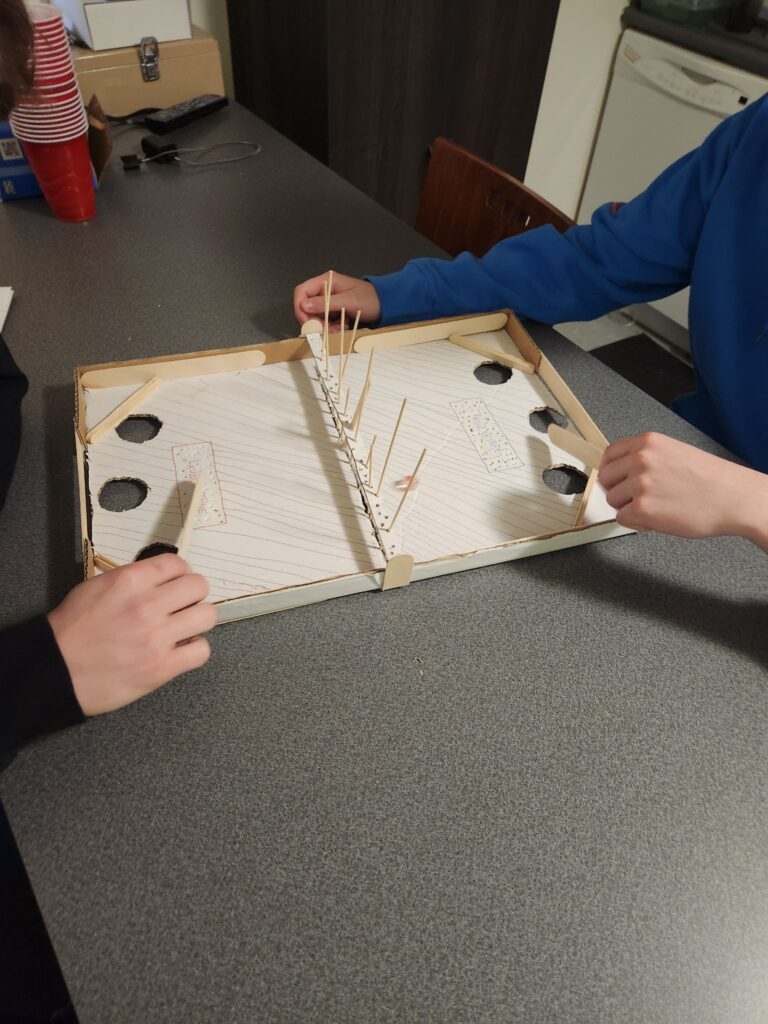
One of the players scored a point, shown by this other picture. Since this goal is occupied by a marble, the player who scored would keep that marble there and move onto their next one.
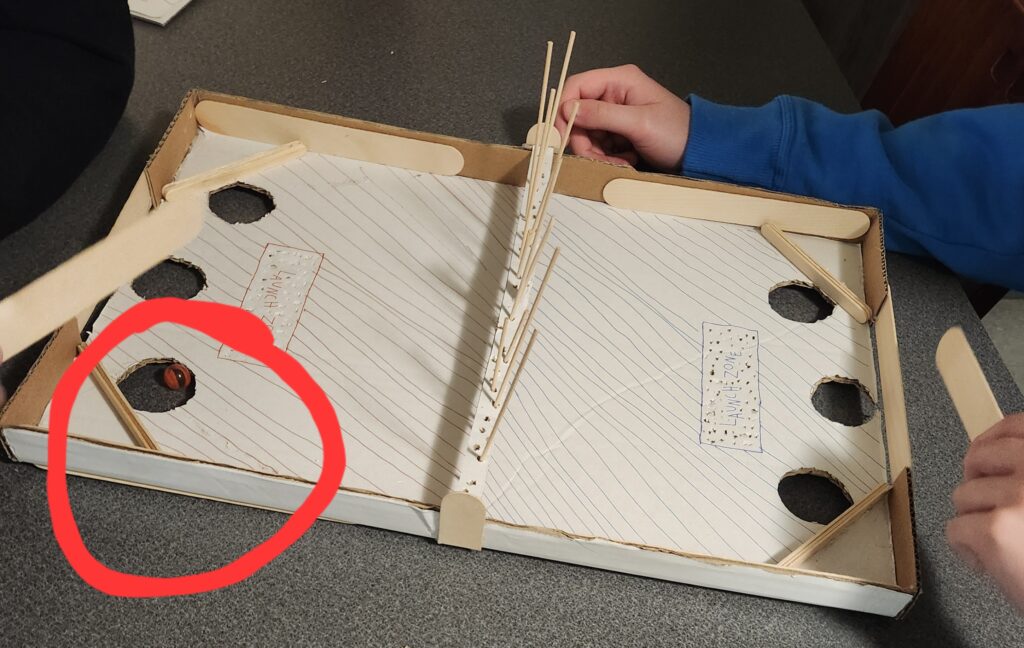
Game Board & Components
The game board is another simple design yet complicated at the same time. There are many things to consider during the construction. For example, I made sure that the corners of the board had borders so that the marble wouldn’t get stuck. The board itself had to be relatively long, so that the marble would have some travel time.
Certain measurements had to be taken into consideration, in order for both sides to be equal. This included where the launch zone would be located, as well as the middle placement of the pegs. Everything had to be measured, which would ensure that both sides have equal advantage. For example, If the middle pegs of the board would gravitate towards one side, then the other side would have smaller room.
Here is what the game looks like setup:
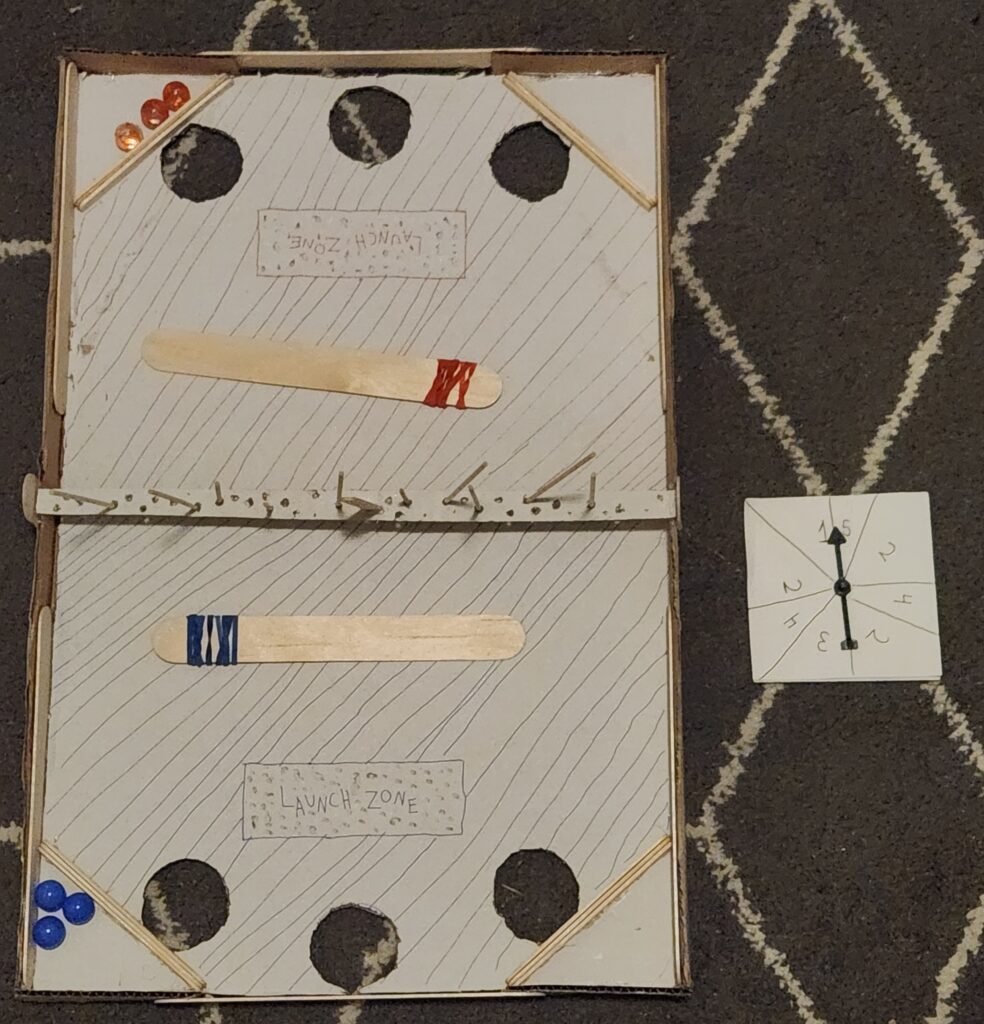
Another component I haven’t touched upon was the spinner mechanic. This adds a luck factor to the game about skill, blending the two categories together nicely. This way, players can anticipate the number of pegs they will be able to move after they hit the ball. The spinner is simple in design, which I usually tend to keep simple. If the design of the spinner were too complicated, it could make the numbers harder to read. Perhaps if I were to take this game to a final revision, I could add some color to the spinner.
Rulebook & Playtesting
Playtesting Notes
- What questions did your players have?
- Players asked if the ball is allowed to ricochet off of the walls. This is unspecified in the rules, so it makes sense that this would be a valid question. Next, players wondered about if they had to move the maximum number of pegs. One of the players spun the wheel after their turn and got a 5, and they wondered if they have to use all 5 movement opportunities. Lastly, another question they had was based on an unspecified situation of hitting one of your own ballot boxes. The ball could ricochet back and hit your own boxes, so I will have to think of a way around that.
- How quickly did they learn to play?
- Players learned fairly quickly. The rules are simple, and the gameplay is very straight forward. After answering the questions they had about the rules, players were able to understand the game fully.
- What kinds of interactions did the players have?
- The players interacted directly with each other. Moving the pegs around made some interesting interaction, as players strategized what peg placement would benefit them while giving the other side a disadvantage. Furthermore, while a player would aim toward the other player’s ballot boxes, there was some tension arising on whether the peg placement was efficient.
- What confused players?
- Mostly just unspecified rules, which I ended up having to answer for them. These unspecified rules were discussed in what questions players asked, but another confusion was if they were allowed to hit multiple ballot boxes. One of the players made the interesting point that if more than one ballot box is knocked over during a turn, maybe the player can choose which ballot box to knock over. Of course, this is something else that will need clarified in the rules. There can be turns in which all three ballot boxes can be knocked over, ending the game in one turn.
- What made players excited?
- Most of the excitement came from spinning the wheel or getting bank shots. The wheel is luck-based, so excitement derived from whether players were going to spin on a big number. The bank shots were hype, as players not only got the ricochet but bypassed the pegs in the middle of the board.
- What did your players enjoy doing?
- Players enjoyed hitting the ball with the popsicle stick. It reminded them of knock hockey, using sticks to hit the puck to the other side of the board.
- Did any aspect of the game frustrate players?
- The only thing that mainly concerned players was the fact that there was no net to catch the marble after hitting the ballot boxes. This is something I’m surprised I haven’t thought of, but as players started hitting the ball, it flew off of the board.
- What is your plan to address player questions. Confusion and frustration?
- In order to address most of the confusion and frustration, I will have to make some clarifications in the rules. Most things that confused the players were not touched upon in the ruleset, so it wouldn’t hurt to make the necessary clarifications. Although I will probably end up dealing with the ballot boxes, whether it is adding a net or completely revamping the mechanic.
Game Reflections
I think that with most of my games, there can still be clarifications to be had. There were still small questions that I haven’t even thought about that could be covered in a future iteration of this game. The development of this game had me focus on combining luck and skill, such as hitting the ball combined with spinning the wheel for movement opportunities. However, I’ve come to realize design flaws within the board, which could be fixed in the future. An example of this “design flaw” could be the middle pegs, which are hard to pull in and out of the cardboard. Refining this game can really shape it up, and next time I will make sure to pay attention to more intricate details which will optimize the playing experience.
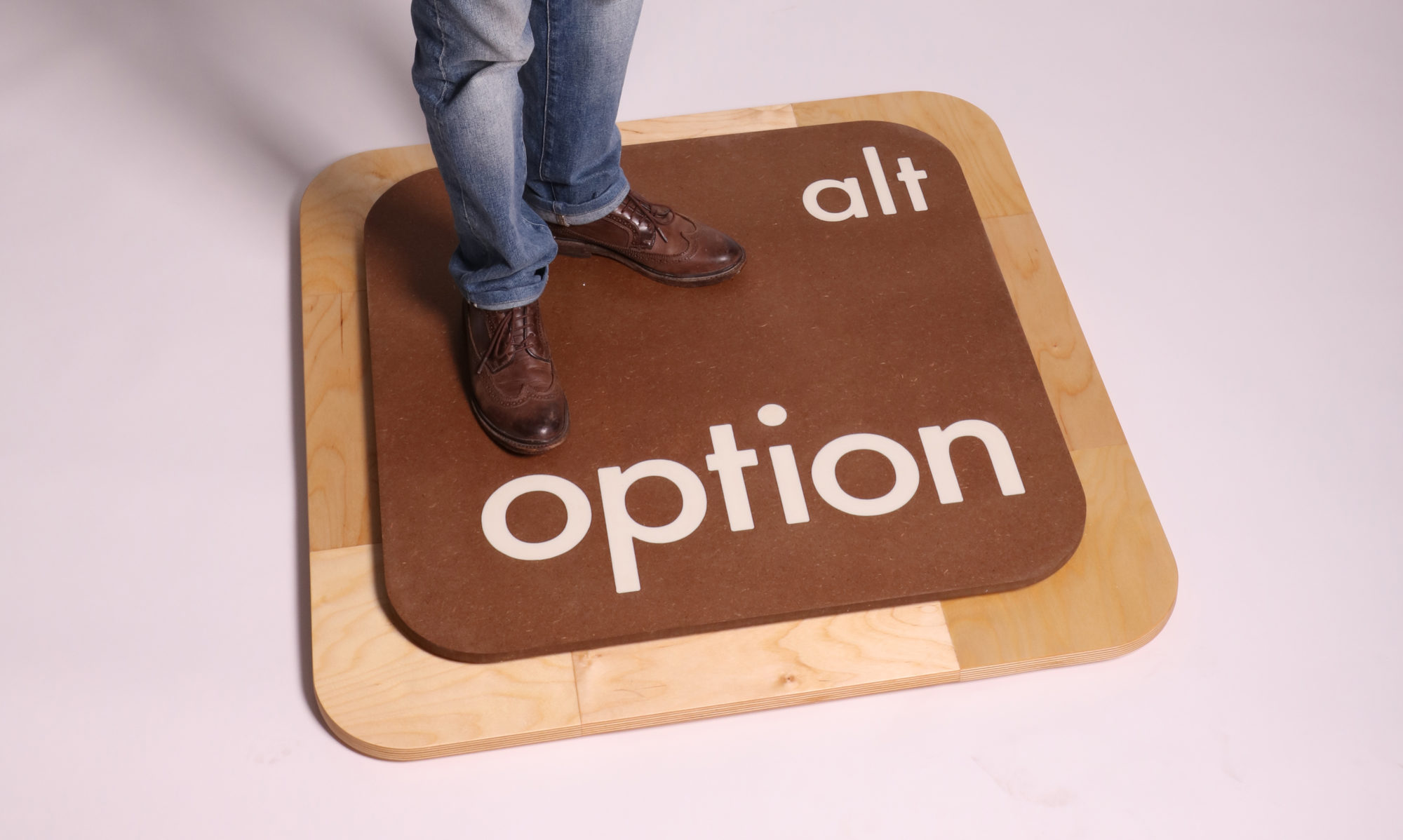
I love the physicality of this game, as it seems like a fun game to play at a party. However, the one thing that’s throwing me off is the whole republicans vs democrats side of it all. It seems like without any other political aspects in the game, having the two sides being republican or democrat could really be no different from red vs blue or crips vs bloods. really was wondering how this had to do with politics besides two sides simply fighting.
I like how the game leans into satire while still highlighting real political tension. The crowd control mechanic sounds like a clever way to show how influence works. It’s chaotic in a way that feels intentional and reflective.